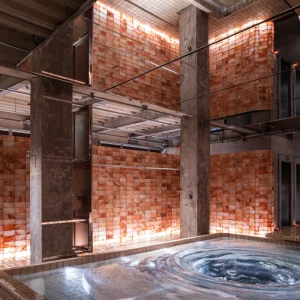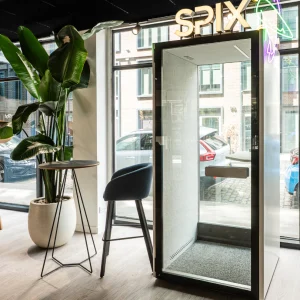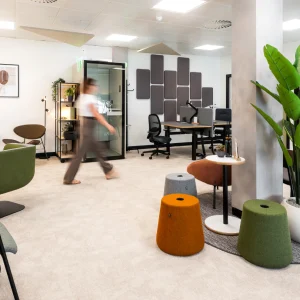Located within the 300,000 square foot, 18-storey main college building at 33 West 42nd Street in New York City, the laboratory spaces have been designed to accommodate diverse researcher programs.
The first phase of the transformation included the conversion of an old, 1,500-square-foot laboratory space into two new research labs. Located on the school’s 16th floor, the new facility features 10 overhead service panels that provide utility connections to movable research tables and counters below. The finishes and fixtures include a fume hood at each lab, emergency wash stations, painted masonry walls, epoxy resin countertops, and vinyl composition tile (VCT) flooring.
Apart from that the new electrical and plumbing systems have also been installed with the HVAC ductwork layout revised and upgraded. The new electrical system includes enclosed brushed aluminum wire raceways beneath windows, with electrical outlets spaced out at four-foot intervals. The new Johnson Controls climate control system connects wirelessly to the building’s management system.
The second phase of the scheme included the renovation and an expansion of an additional research area, faculty offices and bathrooms located on the 17th floor. The finishes include VCT and seamless polymer Stonhard flooring, epoxy-painted concrete masonry unit (CMU) walls, acoustic tile and drywall ceilings, lay-in fluorescent lighting fixtures, and a countertop with a sink.
Apart from that the second phase involved installation of new mechanical, electrical and plumbing (MEP) systems, including an upgraded HVAC that increased the airflow into the expanded area. The new building infrastructure includes an emergency power system and a split cooling system consisting of two new rooftop exhaust fans and a compressor in a soundproofed mechanical room adjacent to the research area. The mechanical room features louvers installed in window openings.
In the final third phase of the project, a new surgery suite was constructed along with surgery preparation, post-op, and procedure rooms as well as two bathrooms. The procedure room will feature surgical lighting and medical countertops and fixtures.
The project team also includes Syska Hennessy Group as the MEP engineer.





